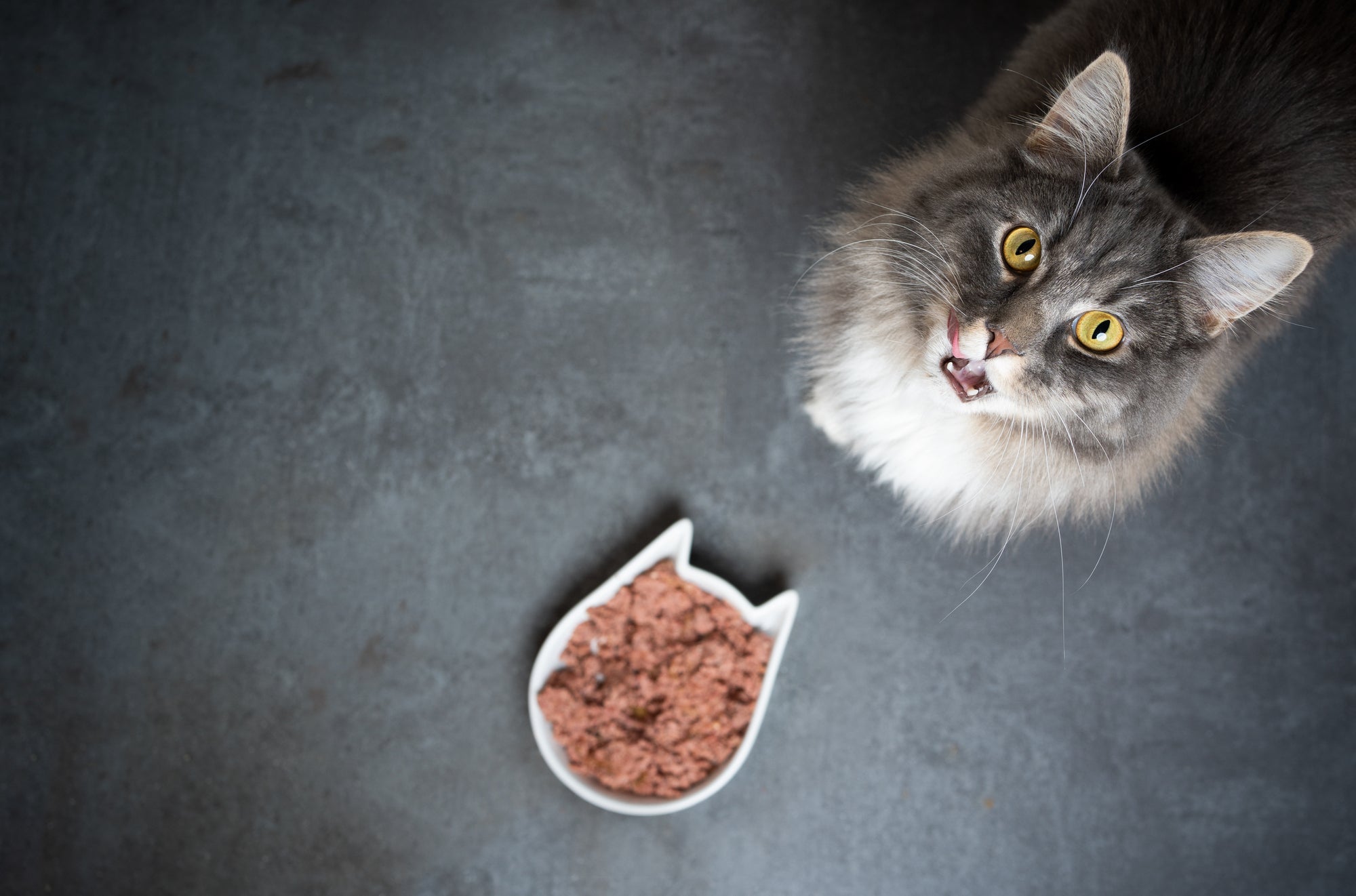We’re all big pet lovers here at Closer Pets, and we like nothing more than bringing you closer to your pet. Whether that’s by providing innovative, award-winning pet products to help make life a little easier or by using our experience to provide you with practical advice. In this blog, we’ll be answering the question ‘Why is my cat not eating?’ so you can understand better why your feline friend might be off their food.
Whether your cat is sniffing food but not eating it or is just completely ignoring it, you can find clear, reliable advice on what to do if your moggy isn’t drinking or eating in this blog.
How long can cats go without food?
Cats can go several days without food, but of course, we really wouldn’t want them to. We want them to be happy, healthy, and have the energy to play and enjoy life. And they aren’t going to do that if they are hungry!
A cat not eating much and missing a meal here and there is perfectly normal. We must remember that regular mealtimes are a human habit, not an animal one. Cats have adjusted to our schedules as they have learned to put up with us, but there’s no such thing as a regular dinnertime in the wild!
That said, if your cat usually eats the same amount at the same time every day and then becomes lethargic and is suddenly not eating, it’s definitely worth looking into.
Why is my cat not eating?
There can be lots of reasons for a cat not eating. It could be down to a lack of hunger or a change of food, activity levels, environment, or routine. It could also be for medical reasons.
In any case, we suggest checking everything you can do at home to get your cat to eat again. Then, if nothing changes, take your feline friend to be checked by a vet. You can’t be too careful!
Not hungry
Sometimes your cat just might not be hungry – it happens to us all occasionally! Sometimes, we eat a particularly large breakfast and don’t feel like lunch, or we just aren’t hungry for one reason or another.
Change of food
Have you changed your cat’s food recently? Switched brands or flavours? Switched them from wet to dry food?
Even though most of us wouldn’t want to eat the same thing for every meal, our furry family members are different. Any small change in food can cause them to stop eating.
If your cat isn’t eating food but eats treats, they may not be a fan of the new food you’ve given them. So, finding their preference that also meets their nutritional needs is key.
Playing or moving less
Does your cat play with you as much as they used to? Do they go out hunting or wandering as much? Are they getting older or recovering from an operation?
All these things can suppress their appetite, which can be a cause of your cat not eating much.
Change in environment
Have you moved the cat bowl? Rearranged the room in which they eat? Redecorated? Laid new carpet or flooring?
Environmental changes can upset your cat’s routine enough for them to skip meals.
Change in routine
Are you working more or different hours? Are you unable to feed your cat at the same time each day?
Our cats are sensitive to any change in routine and environment, which can put them off their food. A cat not drinking or eating could just be because you upset their timetable!
Automatic cat feeders and microchip cat feeders can give your cat access to food if your routine has changed and if you’re not around for your cat’s regular feeding times.
A medical condition
Another reason why your cat may not be eating could be an underlying medical condition; this could be anything from a toothache to an infection or potentially something more serious. If in doubt, take your cat to the vet just to make sure.
My cat isn’t eating food but eats treats
Another scenario that can sometimes occur with cats is that they may avoid their regular food but will eat treats instead.
This can be for a variety of reasons, including those listed above, with a change of food or a change in routine sometimes leading to this behaviour. If you suspect anything unusual, take your cat to the vets just to be sure, as there’s a chance this could be due to a medical condition.
It can, however, simply be a case of them getting used to these tasty treats as opposed to their regular dry or wet food. You should aim not to give in to your cat’s pleading looks regularly (as cute as it may be), as treats are much less nutritionally balanced than regular food.
Whatever the reason may be for your cat avoiding their usual food, the problem can be resolved using the solutions below.
How to encourage a cat to eat
Encouraging a cat to eat can be as easy as undoing the changes you made. However, if you’ve got a slightly stubborn pet, it can require more patience.
If you made a small change such as moving their cat bowl or changing the brand of food you feed them, undoing it should get them eating again.
If you redecorated and changed the flooring or something else, you’ll need to reintroduce them to feeding time, walk them through the change and make them comfortable with it.
Another idea is to change how you feed them. Admittedly, it may seem counterintuitive to begin with, but it can work.
You could try:
Free feeding
Free feeding is when you leave dry food out for your cat to graze as they please. If your cat’s habits have changed and they aren’t hungry at mealtimes, perhaps letting them come and go as they please will work.
Leaving a large portion of food for your cat to graze on all day does have its downsides, though, because cats won’t necessarily regulate themselves in a healthy way. This could cause them to get sick or even gain weight.
That’s why we suggest feeding your pet ‘little and often’ scheduled meals.
Set meal times
If your cat has always been a grazer, sometimes establishing mealtimes and making them learn to expect dinner at a certain time can work.
You can do this with an automatic cat feeder, which allows you to set the times your feeder dispenses the food and can help put your cat on a regular feeding schedule.
Combination feeding
If your cat’s lifestyle is changing, a combination of grazing and mealtimes may suit them best.
Another way to achieve a combination feeding schedule is to use the MiBowl Automatic Microchip Pet Feeder, which only allows access to paired cats via their implanted microchip or a Closer Pets Electronic I.D. Disc, which comes included as standard.
This method would be a good solution for allowing your cat to graze when they’re hungry but still providing them with supervised meals to ensure they’re eating everything they need.
Helping your cat to eat
Some cats are more sensitive than others, and, surprising as it may seem for a hunter, they can react negatively to changes. Of course, we want our feline friends to have a happy life, and a healthy, regular diet is a key part of that.
If your cat won’t eat, investigate your cat’s lifestyle and identify anything that has changed. Revert any changes where possible to see if your cat eats again.
If not, make a different change and introduce your cat to their new schedule. Over time, it can help them to overcome whatever put them off eating in the first place and support them in creating a new habit. Be mindful that it will take patience, though.
Finally, be as thorough as you can with set mealtimes, but don’t leave your cat hungry for too long. If they miss too many dinners, it’s important to take them to a vet and get a professional opinion. Your cat will thank you for it!
Get in touch
If you’ve been wondering why your cat isn’t eating, we hope this blog has given you some good insight into increasing their appetite. If you’d like to find out more of our tips for best caring for your cat, dog, or fish, take a look at our pet advice page for even more handy blogs.
We have a wide range of high-quality cat products at Closer Pets that can make looking after them super simple. If you have any queries about our selection, we’ll be more than happy to help you out when you get in touch with us!

